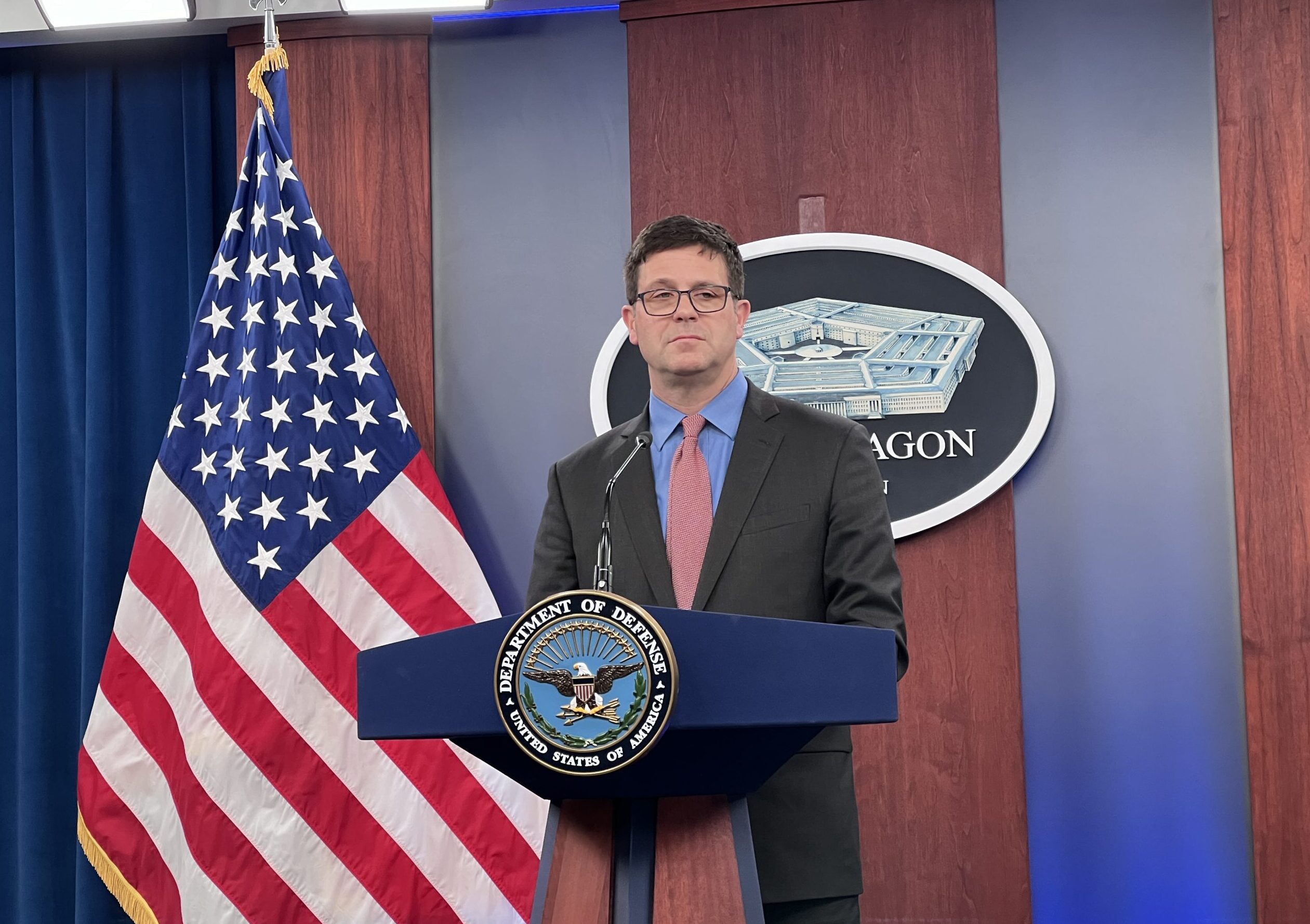WASHINGTON — The Defense Department on April 2 unveiled its first-ever strategy to integrate commercial space technologies into its national security architecture. The move signals the Pentagon’s intent to take advantage of private space sector investments rather than rely solely on custom-built government systems.
The Pentagon’s strategy, however, also recognizes there are structural, procedural and cultural impediments the DoD must clear to shift from its traditional model of developing proprietary space systems meant only for military use.
DoD historically has favored bespoke, custom-designed government systems over commercial off-the-shelf technologies, creating barriers to the adoption of commercial space products and services, Defense Secretary Lloyd Austin noted in introducing the strategy.
“Integrating commercial solutions, as opposed to merely augmenting existing government systems, will require a shift in approach within the department,” Austin wrote in the foreword to the report. “Leaders at all levels need to be aware of and work to eliminate the structural procedural and cultural barriers to overcoming legacy practices and preconceived notions of how the commercial sector can support national security.”
The strategy was developed and written by the office of John Plumb, the outgoing assistant secretary of defense for space policy.
“We need to integrate commercial tools not just in peacetime but also in conflict,” Plumb said April 2 at a Pentagon news conference.
“Space is essential to the joint force,” he said. “The department has a responsibility to leverage all tools available. And those tools include commercial solutions.”
With regard to the cultural barriers mentioned by Austin, Plumb said DoD has to “hold itself accountable” for making the necessary changes in internal processes to make sure commercial solutions get a fair chance to be part of national security programs.
The strategy lists four key principles for using commercial space systems:
- Balancing government and commercial solutions to avoid overreliance on any single provider
- Ensuring interoperability between government and commercial systems without stifling industry innovation
- Increasing resilience by diversifying commercial supply chains
- Operating responsibly in accordance with international space norms
Plumb explained that DoD considers commercial providers as those that develop and supply technologies for the broad commercial market, as opposed to the defense industrial base that builds bespoke systems for the government.
The document identifies 13 mission areas for national security space.
- Combat power projection
- Command and control
- Cyberspace operations
- Electromagnetic warfare
- Environmental monitoring
- Intelligence, surveillance and reconnaissance (ISR)
- Missile warning
- Nuclear detonation detection
- Positioning navigation and timing (PNT)
- Space access, mobility and logistics (SAML)
- Satellite communications
- Space domain awareness (SDA)
- Spacecraft operations
In some areas — combat power projection, command and control, electromagnetic warfare, nuclear detonation, detection; and positioning, navigation and timing — the U.S. government will maintain the primary responsibility
Other areas are viewed as hybrid missions, where the commercial sector would have a larger role. These include satellite communication, cyberspace operations, spacecraft operations, ISR, SDA and environmental monitoring.
The only mission identified as primarily commercial is SAML, for activities like in-space services, assembly and manufacturing. Commercial solutions could be adopted if they demonstrate “technological maturity and match the department’s requirements.”
The report says there are risks in adopting commercial technologies not designed specifically for military purposes. However, it states, “there is also risk in not integrating commercial solutions and failing to capitalize on the commercial sector’s technological innovation.”
Plumb said DoD will work to establish “security conditions” to help commercial companies reduce risks during conflicts. For example, DoD will share threat information and provide financial protection if required, he said.
Separately, the U.S. Space Force is expected to release its own strategy for the use of commercial technologies and services. Plumb said the DoD strategy is more policy focused. “We had a lot of discussions about this with [the chief of space operations] General Saltzman,” he added.
Related
Read the original article here



